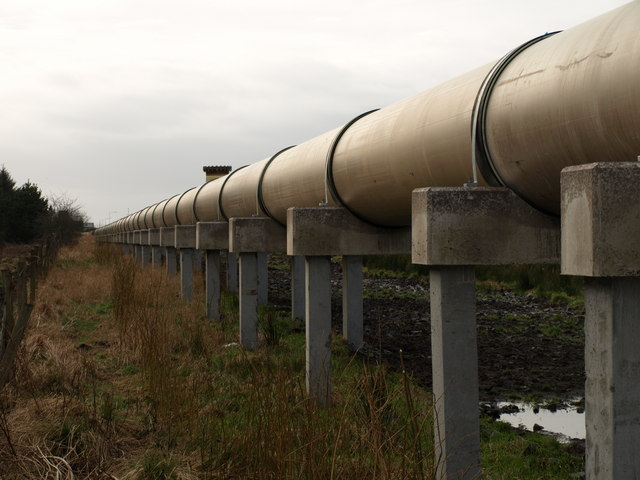Please support our coverage of democratic movements and become a supporting member of rabble.ca.
The Enbridge Line 37 pipeline spilled an estimated 750 barrels of crude oil 70 kilometres southeast of Fort McMurray contaminating a nearby stream on Saturday morning. Line 37 serves the CNOOC Long Lake tar sands project. The cause of the pipeline rupture is being looked into, but it may be due to ground movement from the recent heavy rains.
Sun Media reports, “As of Saturday night, (company spokesman Glen) Whelan did not know how long it took emergency crews to respond to the scene, or how long the pipeline had been leaking (but said that) Enbridge shut the pipeline down ‘within minutes of the alarm warning.'”
Reuters adds, “The company said that it had also shut down two major oil pipelines serving Canada’s oil sands region as a precaution. Shipment on the 345,000 barrels per day Athabasca pipeline and the 350,000 barrels per day Waupisoo line have been suspended while the company investigates the cause of the Line 37 spill. It gave no estimate for when the lines would re-open.”
Enbridge is the company behind the Northern Gateway pipeline as well as the Line 9 pipeline reversal.
Last month, CBC reported, “[Enbridge] is breaking National Energy Board safety rules at 117 of its 125 pump stations across the country…Enbridge was ordered by the (NEB) to disclose whether or not it had backup power to operate emergency shut-down systems in the facilities that keep oil flowing through its pipes. The company told the NEB only eight of its pump stations complied with the board’s backup power system regulation….[Enbridge now] has an NEB-approved plan to retrofit all 117 pump stations with backup power although no timeline has been made public for when facilities will be brought in line with regulations.”
Last October, the Toronto star reported, “A study conducted by conservation areas in the Greater Toronto Area warns that a pipeline break could have a ‘significant’ effect on drinking water….The study modeled the effect of breaks where pipelines (which would include Line 9) cross streams and rivers that flow into Lake Ontario near drinking water intakes. The spills in the model would mean that contaminants would exceed drinking water standards at the water plant intakes, the study says.”
Alberta’s pipeline infrastructure has leaked 61,000 times in the last 37 years. Approximately 29,000 spills involved oil, a rate of two spills a day.
Photo: wikipedia commons




